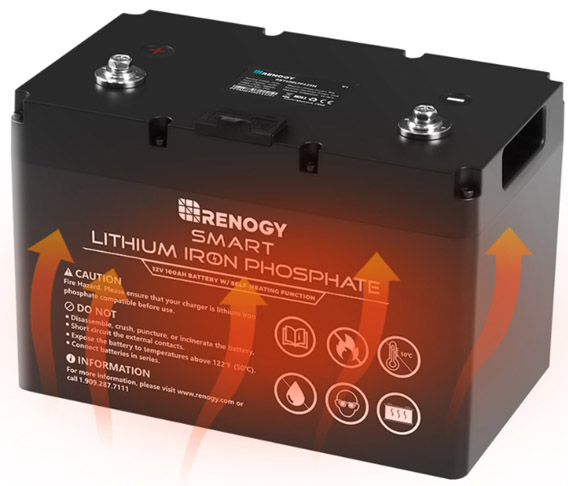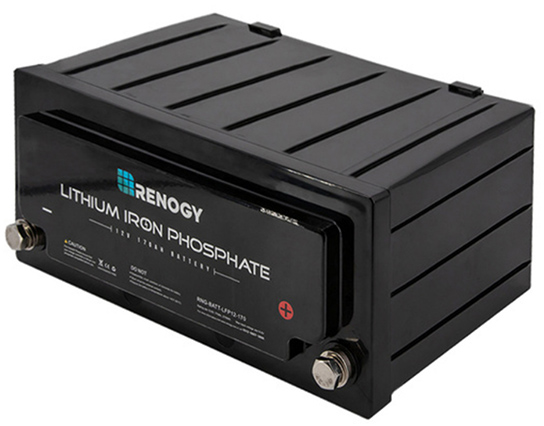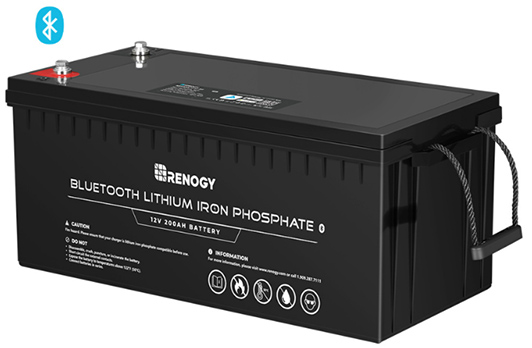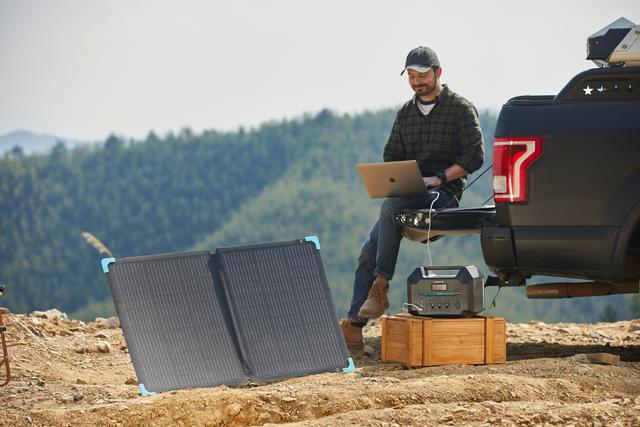Unlocking Power On-the-Go: The Ultimate Guide to Lithium Leisure Batteries
Unlocking Power On-the-Go: The Ultimate Guide to Lithium Leisure Batteries
Lead-acid is dead. Long live the lithium leisure battery!
Although it isn't as dramatic as all that, the truth is that there aren’t very many situations in the modern world where you would pick a lead-acid battery over a modern lithium leisure battery. The one argument for the old-style batteries used to be cost, but even that scenario is being challenged when you consider the amazing lifespan of LiFePO4 energy storage cells and the replacement cost of lead-acid.
In this article, we’ll cover the basics, as well as delve into some of the more subtle aspects of choosing the right lithium leisure battery for your demanding mobile lifestyle.
In this article, we will discuss:
- What is a Lithium Leisure Battery?
- What is the best lithium leisure battery for campers, boats, and campsites?
- What’s the difference between a leisure battery and a car battery?
- What Are The Different Types Of Leisure Batteries?
- Factors to Consider When Choosing a Leisure Battery
- What size of lithium leisure battery do you need for your caravan, boat, or campsite?
- How long will a lithium leisure battery last?
- How much does a lithium leisure battery cost?
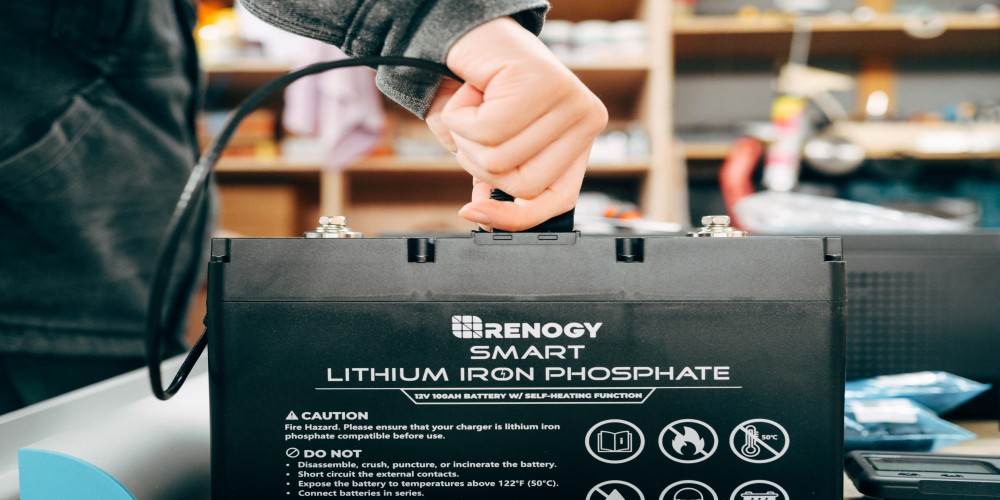
What is a Lithium Leisure Battery?
There are a lot of possible definitions floating around, but the most succinct is a lithium leisure battery stores electrical energy for your cabin, campervan, boat, or other off-road shelters (mobile or otherwise). Some of the bigger models can pull double duty, also storing solar energy for home use.
The cells that store the electricity in lithium leisure batteries are made of lithium, iron, and phosphate. The exact chemical formula that these batteries use, which has also become a common shorthand reference when talking about these units, is ‘ LiFePO4’. So if you ever see that abbreviation, they’re talking about lithium leisure batteries.
Sometimes a lithium ion leisure battery are intended to be a back up as a starter battery. Other times, they’re used to power appliances and even receive solar power from flexible or rigid solar panels. And often, they perform double duty, with a small LiFePO4 acting as a starter and a larger one acting as both energy storage and a backup battery just in case the first one ever dies on the road.
In short, lithium leisure batteries are both utility and survival tools that can provide energy in a myriad of different situations.
Do You Need a Lithium Leisure Battery?
That all depends on your lifestyle.
If you only go back and forth to work, drive a small car, avoid the great outdoors, and live in a rented property with no solar, you can probably get away with using a normal car battery and replacing it when it starts to give out.
But if you like to travel, or you go camping a lot, or if you have access to solar power and want to use it more effectively, or you own a campervan or boat, or even if you drive a larger vehicle that needs additional reliability… then you probably want a lithium leisure battery in your life.
What is the best lithium leisure battery for campers, boats, and campsites?
For campers and boats that need to operate in freezing temperatures, depending on how much energy usage you calculated in the prior steps, one to two 12V 100Ah Smart Lithium Iron Phosphate Batteries with Self-Heating Function will usually do the trick. If you know, you’ll always be operating in non-freezing temperatures. You can opt for one to two higher capacity 12V 170Ah LiFePO4 batteries at nearly the same price. Pairing these with an RV, van, or marine solar kit will keep them topped up on sunny days without the need for shore power.
For cabins and static campsites, two to three 12V 200Ah Lithium Iron Phosphate Battery with Bluetooth connectivity is a typical setup (but once again, consult with the solar calculator for more exact figures). The Bluetooth battery can be used to inform both your mobile app and any wall-mounted monitoring system. These are normally paired with solar kits that can recharge the batteries if given around four peak sun hours, so make sure you size your arrays accordingly.
|
Battery |
12V 100Ah Smart Lithium Iron Phosphate Batteries | 12V 170Ah LiFePO4 batteries | 12V 200Ah Lithium Iron Phosphate Battery w/ Bluetooth |
|
Cycle Life |
≥4000 Cycles @ 80% DoD |
80% DOD 2000 cycles |
80%DOD 2000 Cycles |
| Warranty |
5-year prorated warranty
|
5-year prorated warranty
|
5-year prorated warranty |
|
Key Features |
|
|
|
What’s the difference between a leisure battery and a car battery?
A car battery generally refers to the starter battery, that aims to provide sarting power for the vehichles. Most car battery are the old lead-acid battery types. These units had a poor Depth of Discharge (DoD) and started to degrade rapidly if drained below 50% power on a regular basis. They take a long time to fully charge, around 8 to 10 hours. The temperature range of their operation is quite broad, however, between –20°C and 50°C. This allows them to perform without any kind of heating function in freezing temperatures. They weigh two to four times more than the equivalent lithium-ion battery on average.
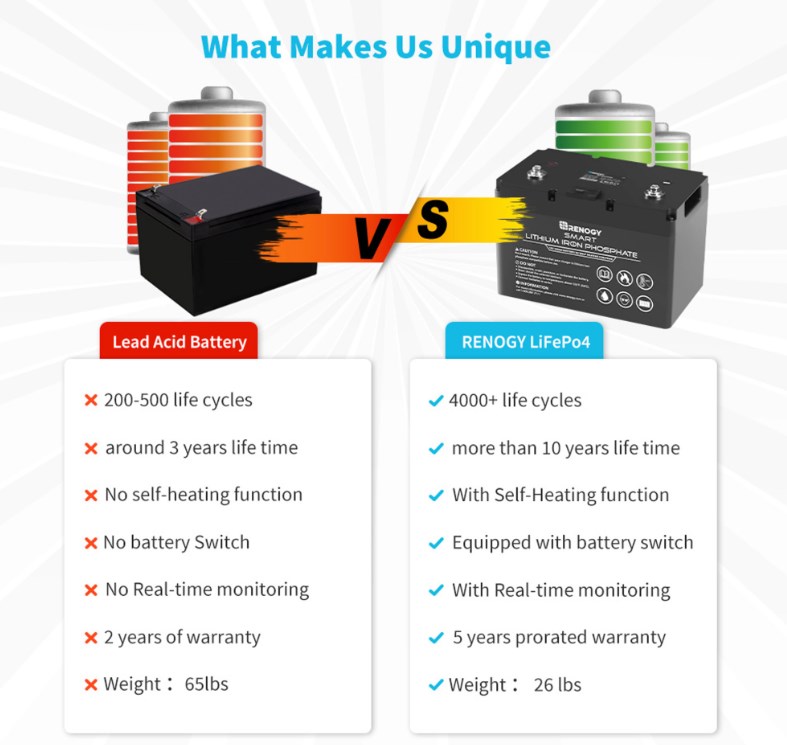
A leisure battery is uses LiFePO4 cell technology, which means they don’t degrade very rapidly unless regularly brought down below 90% charge. Depending on the total capacity, charging a lithium leisure battery takes between 20 minutes and three hours. They have a more narrow range of temperature operation, between 0°C and 50°C generally, which means they need an internal or external heating mechanism to operate in freezing weather. Luckily, our Smart Lithium Battery have intelligent Self-heating function, enabling your devices to be charged in low temperatures.
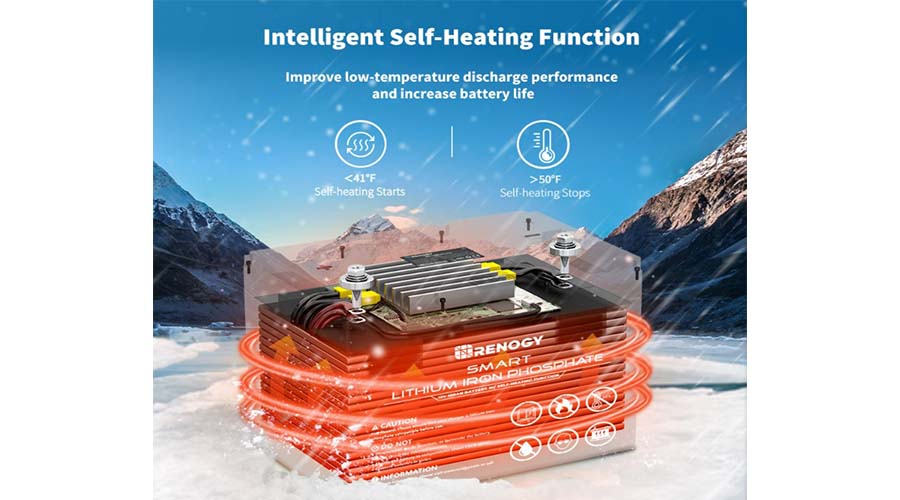
What Are The Different Types Of Leisure Batteries?
In the past, there were other types of leisure batteries to consider. These were precursors to LiFePO4 cells, each having its own benefits and disadvantages.
Sealed Flooded Lead-Acid (FLA): Much like normal lead-acid starter batteries, sealed flooded lead-acid batteries were heavy, had a poor sustainable depth of discharge (50%), and had long recharge times. But the terminals were no longer exposed, giving them some reliable weatherproofing to work with. Semi-traction battery tech was an improvement on the base models, allowing slightly higher DoD and somewhat faster charge times. But they remained at the bottom end of leisure batteries.
Absorbed Glass Matt (AGM): This was a type of lead-acid battery that had improved weatherproofing because the electrolyte was embedded in a fibreglass mat. They were still only good for around 50% DoD, but they had ultra-low maintenance and were spill-proof.
Gel Batteries: The reactive component of gel batteries was essentially a thick paste instead of a liquid. They were essentially spill-proof even if the outer case was slightly compromised (though they should be immediately repaired or replaced in that case, once out of danger and back in civilization). And their depth of discharge also is about 50%.
Lead Crystal: These are some of the more expensive lead-based batteries, but they have the highest depth of discharge at around 80%. They’re heavybut have an astoundingly high operating temperature, some exceeding 60°C. These are still great desert batteries, even if you sacrifice weight for performance.
LiFePO4: We’ve already discussed the lighter weight, faster charging, and superior depth of discharge on these batteries. It’s depth of discharge is 80%-90%. They do require internal or external heating for freezing weatherand a cool cabinet for desert functionality, which can decrease overall solar recharge efficiency in 40°+C conditions. But for most UK users, this will hopefully never be a concern.
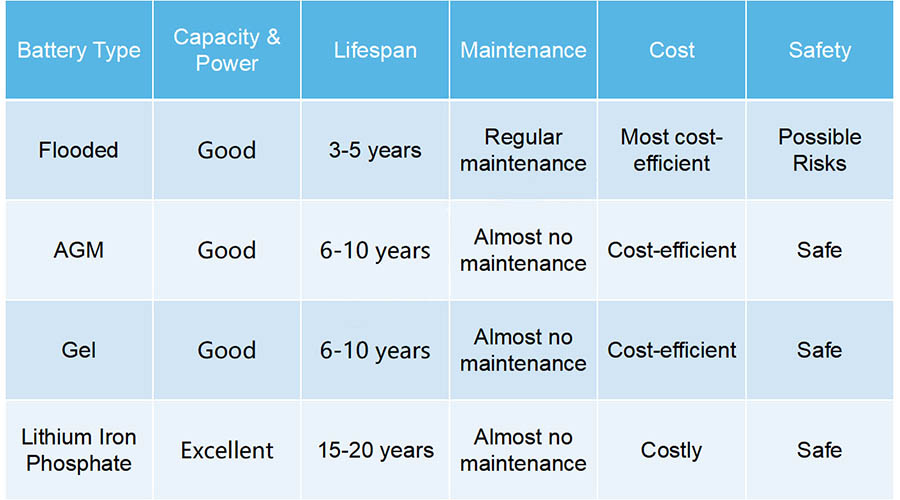
Factors to Consider When Choosing a Leisure Battery
As you might have guessed, most people in the UK are going to be choosing a lithium leisure battery for every application except perhaps as a motor starter. There are several factors to consider:
Price: When considering installing a solar system, you probably already have an approximate budget. The price difference between several different types of batteries is obvious. We can find from the shopping platform that lead-acid batteries are relatively cheaper than lithium batteries. But in the long term, lithium batteries are the most cost-effective.
Capacity: You should know what is the size of the leisure battery that fits your needs. It depends on your application scenario, home use, different automobile types, or commercial use. And it is also related to the number of users and electricity consumption ways, such as off-grid or grid-connected. When you figure out the per-day usage, then you can calculate the size of the leisure battery.
Size: If you are choosing a battery for your caravan, you will need to consider the size of it. Since the space of a caravan or Rv is limited.
Lifespan: This is a very important factor for you. It decides whether your expense is worth it. You don’t want to waste money on a short-term guarantee. Generally, lithium battery owns the benefit of a longer lifespan than others. The depth of discharge(DOD) of the battery is a major factor affecting battery life. Under safe use, the discharge depth of lead-acid batteries is 45%, while that of lithium batteries can be as high as 80%-90%. A deeper depth of discharge means more charging cycles and longer battery life.
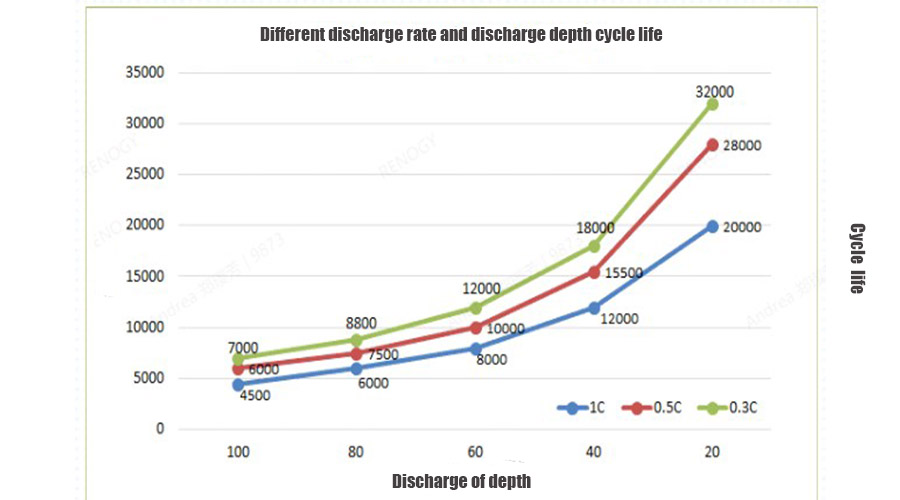
Weight: Better to buy a light lithium leisure battery; otherwise, your RV will be deformed because of the heavy battery, and it even affects the RV driving.
Efficiency: The charging efficiency of lithium batteries is much higher than that of lead-acid batteries. With the same capacity, for example, Renogy’s 12V 100Ah lithium battery can be fully charged in only 2 hours, while lead-acid batteries need 5-8 hours to be fully charged.
What size of lithium leisure battery do you need for your caravan, boat, or campsite?
A smaller lithium leisure battery, usually between 200 and 600 Watt hours (Wh) of capacity, might be used as a portable basecamp energy solution when camping out or using a rented cabin.
A larger unit be mounted in a campervan or boat. These units will range from 1 to 4 kiloWatt hours (kWh), depending on your needs and the ability to recharge them.
A full off-grid cabin setup might consist of an array of lithium leisure batteries with a total capacity of between 2 and 12 kWh, depending on how ‘off grid’ the cabin is and how intense the electricity use is intended to be. These are almost always coupled with rigid solar panel arrays of some sort.
| scenarios | Battery Size |
| Portable BaseCamp | 200- 600 Wh |
| Larger Campervan or Boat | 1 - 4kWh |
| Off-gridCabin Setup | 2 -12 kWh |
In order to customize how large of a lithium leisure battery you need for your caravan, boat, or campsite, you need to figure out what kind of electrical devices you’ll be running and at what time of day or night.
This solar calculator is the best way to narrow down the energy needs of your caravan, RV, or boat. By plugging in all of the devices and appliances that you’ll want to use daily, you can figure out how big of an off grid reserve you’ll need. If you have active solar power coming in via an array of solar panels, then you’ll want to do more energy-intensive activities during peak sun hours for your area. It’s also a method of recharging your lithium leisure batteries when you aren’t directly connected to a shore umbilical.
This same method works for cabins and permanent campsites, although when housing your energy storage in structures that don’t move, you can opt for bigger batteries since the weight is less of a factor. You may wish to double the estimated power usage as your target lithium leisure battery size, to compensate for rainy days when you’re completely off grid.
For temporary campsites, you want to travel as lightly as possible. A light travel power station and an angled portable solar panel can be taken on the trail, but that’s about as much as one can reasonably be expected to haul in addition to a laptop and normal amounts of food, water, and kit. Budget your energy usage accordingly.
How long will a lithium leisure battery last?
If your average DoD on the battery is 80%, you should get around 2,000-4000 cycles. That’s between 6-10 years or more of constant use. This is reflected by the typical 5-year warranty on such devices. If the user is more seasonal, expect 10 or more years of functionality out of your lithium leisure battery.
There are several external factors that affect the performance and longevity of lithium leisure batteries. Therefore, you need to avoid overcharge or overdischarge the lithium leisure batteries. Install the them in a clean, cool and dry place, staying away from sunlight and high temperatures. Anyway, follow the instructions from manufacture.
How much does a lithium leisure battery cost?
The smaller non-heated lithium leisure batteries run around £450 on sale, £550 MSRP. They’re good for 1.2 kWh of storage. Expect to pay around £100 more for the same capacity battery that comes with self-heating.
The bigger, 2.4 kWh storage batteries with Bluetooth are cheaper than buying two of the smaller ones. They’re priced at around £900 on sale and £1,100 at full price.
The tiny, portable 222 Wh lithium leisure batteries are priced at about £150 on sale, £300 MSRP.
Remember that the non-portable batteries can be hooked up in tandem to either provide expanded energy storage capability, or to double the voltage to 24V for certain heavy-duty applications. For more information, or if you have any questions about lithium leisure batteries, contact Renogy today.
Related articles:
Lithium Battery Charger: Everything You Need to Know in the UK
What Is the Life Expectancy of a Solar Battery?
Charging A Solar Battery In The U.K.
Lithium Battery Charger: Everything You Need To Know In The UK


